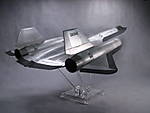For aircraft I usually start where most do, in the cockpit. Painting as I go along, sometimes I get to a point where I need to let things set or dry before I can continue. This is where the order of the instructions goes out the window. While that cockpit dries I'll be cleaning up the wheels and landing gear, making various bits and pieces to add to them and then adding them if I still need to kill more time. After the cockpit goes in and the fuse halves are together I'll apply putty or Mr Surfacer 500 as needed. While this dries I move to what is usually the next step, the wings. Test fitting and cleaning up as needed. Inserting guns and/or gun barrels and any other things that can be done now. Paint interiors of wheel bays, etc. As someone mentioned before, I look for anything that can be built as a subassembly then added to the model as I go along. And the kit instructions go out the window again. I discovered (due to someone elses experiment) that glueing the tops of the wings on first instead of mating the upper and lower and then installing them as a unit yields a much better wing root to fuse joint. I rarely use anything more than primer here for any gaps. Just another example of what works for me but maybe not someone else. Obviously the joint alignment is critical to avoid huge putty issues everwhere BUT the wing root.
Then back to putty work. Once putty is ok'd I prime and let it set, moving on to other things. Is the plane a radial? Now would be a good time to assemble, detail and paint that R2800. Engine cowls too. Add color to the inside and weather accordingly while you can get to it. Sometimes I'll start the canopy masking here, depending on the complexity of the canopy. A bubble top just takes a second but and SBD-3 or a Kate takes a couple of hours. I like to get a head start so it will be ready to paint when the fuse color goes on.
After prime or base color dries I look around and find the putty spots that need more attention and give it. More prime and let dry. Back to other things. Repeat until the bulk of the painting is done.
I add parts to the kit in an order that puts on the strongest parts first and the weakest last. Now that the bulk of the kit is together I put on the gear, let set. Start paying attention to ordinance if there is any. Around the end of the paint dry time I'll give it the Future if my finish requires and usually after I have the gear on. That way it has something to set on while the Future dries. After that, decals. Again with Future. Then weathering. Then flat coat. Finally the canopy and weakest of parts like pitot tubes, antennae gear doors, whatever is left.
That's a single engined fighter in a nutshell. If I add resin or PE it all changes depending on the comlexity of what I'm adding.
Like the fellow before mentioned, I think it's wise to read the instructions. But then, like him, I kinda ignore them. Until I need to paint a part I don't recognize and need a color call out.
Just to throw another wrench into my attempt to answer your question, all the above goes out the window if I'm building something as complex as the previously mentioned SBD-3 from Accurate Miniatures. The kit makers warn the builder to follow the instructions and then oddly enough tell you where to ignore/amend/disregard them. Or they give you an option to follow or change the order of the instructions. From what I've seen so far following the instructions just about to the letter will produce the less painfull build of the kit.
So there you have it.

What I do. And sometimes what I don't do.























